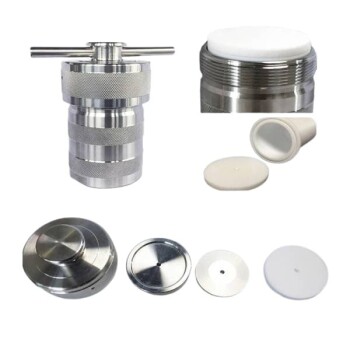Pyrolysis is not part of combustion; rather, it is a distinct thermal decomposition process that occurs in the absence of oxygen. While both processes involve the application of heat to organic materials, their mechanisms, conditions, and outcomes differ significantly. Combustion is an exothermic reaction that requires oxygen and produces heat, CO2, and ash, whereas pyrolysis is an endothermic process that breaks down materials into gases, liquids, and solids like biochar and syngas without oxygen. The primary goal of pyrolysis is to obtain useful products from raw materials or waste, making it more environmentally friendly compared to combustion.
Key Points Explained:

-
Definition of Pyrolysis and Combustion:
- Pyrolysis: A thermal decomposition process that occurs in an oxygen-free environment at high temperatures (300–900 °C). It breaks down organic materials into gases, liquids (bio-oil), and solids (biochar).
- Combustion: A chemical reaction that involves burning organic materials in the presence of oxygen, releasing heat, CO2, and ash. It is an exothermic process.
-
Oxygen Dependency:
- Pyrolysis occurs in the absence of oxygen, making it an inert or anaerobic process. This lack of oxygen prevents oxidation and ensures the breakdown of materials into energy-rich products.
- Combustion requires oxygen to sustain the burning process, leading to the complete oxidation of materials and the release of energy in the form of heat.
-
Environmental Impact:
- Pyrolysis is considered more environmentally friendly because it produces fewer harmful emissions compared to combustion. It also generates valuable byproducts like biochar and syngas, which can be used for energy or as raw materials.
- Combustion, while efficient for energy production, releases significant amounts of CO2 and other pollutants, contributing to environmental degradation.
-
Energy Dynamics:
- Pyrolysis is primarily an endothermic process, meaning it absorbs heat to break down materials. This ensures that the resulting products retain high energy content.
- Combustion is exothermic, releasing heat energy as a byproduct of the oxidation reaction.
-
End Products:
- Pyrolysis yields three main products:
- Gases: Such as syngas (a mixture of hydrogen and carbon monoxide), which can be used as fuel.
- Liquids: Bio-oil, which can be refined into fuels or chemicals.
- Solids: Biochar, a carbon-rich material used in agriculture or as a fuel.
- Combustion primarily produces heat, CO2, water vapor, and ash, with no significant byproducts for further use.
- Pyrolysis yields three main products:
-
Applications:
- Pyrolysis is used for converting waste materials like plastics, tires, and biomass into renewable energy sources and valuable chemicals. It is also employed in carbon capture and storage technologies.
- Combustion is widely used for energy generation in power plants, heating systems, and industrial processes.
-
Process Conditions:
- Pyrolysis operates at high temperatures but in a controlled, oxygen-free environment. The absence of oxygen ensures that the materials decompose rather than burn.
- Combustion requires a continuous supply of oxygen and occurs at high temperatures, leading to the complete breakdown of materials into simpler compounds.
-
Comparison with Other Processes:
- Unlike gasification, which partially oxidizes materials to produce syngas, pyrolysis avoids oxidation entirely.
- Unlike hydrolysis, which uses water to break down materials, pyrolysis relies solely on heat in an inert atmosphere.
In summary, pyrolysis and combustion are fundamentally different processes. Pyrolysis is a decomposition process that occurs without oxygen, producing energy-rich byproducts, while combustion is an oxidation process that releases heat and CO2. Understanding these differences is crucial for selecting the appropriate technology for specific applications, such as waste management, energy production, or environmental sustainability.
Summary Table:
| Aspect | Pyrolysis | Combustion |
|---|---|---|
| Oxygen Dependency | Occurs in the absence of oxygen (anaerobic process). | Requires oxygen to sustain the burning process. |
| Process Type | Endothermic (absorbs heat). | Exothermic (releases heat). |
| End Products | Gases (syngas), liquids (bio-oil), and solids (biochar). | Heat, CO2, water vapor, and ash. |
| Environmental Impact | More environmentally friendly; fewer emissions and valuable byproducts. | Releases CO2 and pollutants, contributing to environmental degradation. |
| Applications | Waste conversion, renewable energy, and carbon capture technologies. | Energy generation in power plants, heating systems, and industrial processes. |
Want to learn more about pyrolysis and combustion? Contact our experts today for tailored solutions!










